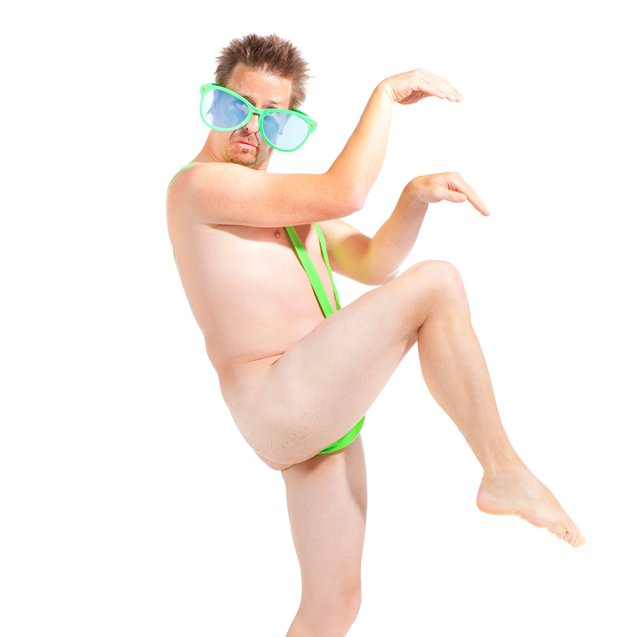
Having employed designers in various roles for the past 20 plus years, I am always surprised by some of the basic mistakes that are made, particularly by graduates or for junior roles, when applicants submit their initial approach for an advertised role.
There are a lot of employment experts who will provide tips and advice on submitting an application, but I thought I would try and help design graduates to get it right first time and try to help them understand why these things are so important from an employer’s point of view in the real world.
Most employers now operate strict HR procedures to ensure that everyone has an equal opportunity to gain a role they are seeking when advertising or at interview. That said, our industry has the added element of creativity and technical ability that needs to be judged in relation to the role on offer. Prior to interview you can still give yourself the best possible chance by considering a few key points.
So here is a slightly tongue in cheek look at the dos and don’ts of being a graduate applicant or applicant for a junior designer role... I hope they help!
• Spelling and Grammar
What can I say? You are applying for a job where attention to detail and communication skills are paramount. Check the spelling, check the grammar, then read it all again. If you're not sure get someone else to check it, just spell check it please.
• Read the Advert or Job Specification
Obvious, right? Have you read what is being asked for? Have you sent the information which has been requested? Personally, I always ask for a portfolio or portfolio link to be supplied and always, without fail, I will receive applications with "portfolio available on request".
So, what is the problem here? Well, speaking from my own point of view, I work really long hours (as many do) and I tend to initially review CV's and portfolios in the evening, at night or at the weekend. One of my last adverts for a junior role had forty-seven replies in the first two days, so I'm just not able to stop what I am doing to email a candidate to "request a portfolio" for which I have already asked. Besides, this also shows the employer that the candidate is not able to understand a brief or follow instruction. So, I may possibly miss the best junior designer ever to pass my desk, but it is still a no.
• Confident not Arrogant

A robust, confident personality, bursting with ideas and creative talent is just what any studio is looking for. There is a BUT... any confidence needs to be tempered with a level of humility. Be engaging, not crass. I have had some real stand out application letters which really highlight the applicant with a well thought out, but positive approach. At the other end of the scale, I have also had ten word covering emails along the lines of "Dave, bold, creative & proficient - click here for more" ... err, no thanks.
• Research
The margin between being noticed or not can be small, time constraints and the volume of applications are often an issue to most employers. So, anything you can do to give yourself the edge is worthwhile. Researching the company is one of the oldest tricks in the book. It's old school, but few bother. Of the forty-seven I mentioned earlier, maybe five had researched my company. It doesn't have to be extensive, just something saying... “I would love to work with X client” or “I really liked Y project”.
I read every application letter personally, a little effort shows the employer that you have bothered and you are interested.
• Generic Cover Letters
If you are going to use a generic "fill in the blanks" style cover letter, please, please, please, make sure you change the details to make them relevant to the actual company you have applied to.
I once received an application addressed to me personally, with two paragraphs telling me, in detail, how much the applicant wanted to part of the team at A DIFFERENT agency, truly. That's great to hear, apply to them!
• Socially Acceptable
When you are applying be mindful of what information is available about you in the public domain. Employers will generally cast their eye over your LinkedIn profile and in some roles over your social media, if it's publicly accessible. What your views are and how you behave out of work is, of course, totally up to you.

But however, like it or not, you are trying to create the right impression and if the first image of you that pops up in a Google search is of you drunk and vomiting in a ‘mankini’… it’s not ideal.
• Be Portfolio Savvy
As with many of these points, there is a balance to be had when submitting your portfolio for a role. Controversial and edgy work in your portfolio can have its place, delivering tricky messages effectively is often part of the job. When this work moves into highly conceptual or even distasteful subject matter, you should think long and hard. You may be able to put an excellent and engaging case for the conceptual work in interview, but you need to get to the interview stage first. Finally, consider tailoring your portfolio to the role you are applying for to maximise its relevance.
• Be Yourself
Everyone wants to make the best impression, but most employers will tell you that, over the years, we all develop a "bull filter". Most of us have many years’ experience and are quite long in the tooth. I know I can spot bull in a CV from a mile off, and whilst a little fluffing and embellishing is natural, too many buzz words and glib statements can often backfire.
• Don't ask for Guidance or Advice with Your Application
Providing feedback to an applicant has become a legal minefield and most businesses are advised to simply refuse any request to protect themselves. Personally, I think this is a shame as, for many graduates, it is still a steep learning curve and some advice would be helpful. I do think that you will often find that experienced professionals in the industry would be happy to provide some guidance, but NOT at the time you are applying for a job.
• Don't Give Up
The biggest single piece of advice I would give is, while you should stay grounded, don't give up on chasing your passion for design or becoming a designer. Becoming a designer can be one of the most enjoyable, engaging, eclectic and rewarding careers a creative person can hope for. You may need to apply one hundred times, pick yourself up after repeated knock backs and really work on keeping your spirits up, but when you get to work with household names, see your design work in a store or when a simple leaflet you have designed helps a new start achieve their business dream, the buzz you get makes the heartache and slog worth it.
And, that’s it! I hope these tips help you achieve your goal.
If any graduates applying for roles have actually read this article to this point, then well done and thanks! If you have any questions or queries before you apply for a role, I would be happy to try and advise where I can, it may not be immediate, but feel free to message me.
You have a minor misspelling in the following sentence:
It should be publicly instead of publically.Downvoting a post can decrease pending rewards and make it less visible. Common reasons:
Submit
Sorted, ironic when I am telling people to check spelling!
Downvoting a post can decrease pending rewards and make it less visible. Common reasons:
Submit
✅ @sadbassa, I gave you an upvote on your first post! Please give me a follow and I will give you a follow in return!
Please also take a moment to read this post regarding bad behavior on Steemit.
Downvoting a post can decrease pending rewards and make it less visible. Common reasons:
Submit
Congratulations @sadbassa! You received a personal award!
You can view your badges on your Steem Board and compare to others on the Steem Ranking
Vote for @Steemitboard as a witness to get one more award and increased upvotes!
Downvoting a post can decrease pending rewards and make it less visible. Common reasons:
Submit